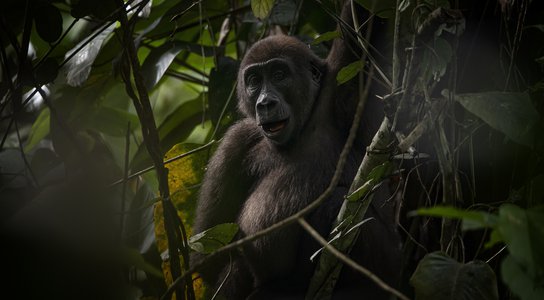In the hot, dry summer of 2003, I looked out from my house to see that the sky was black with smoke. Bright orange flames leapt up from the burning moorland nearby, giving the evening an unnatural, eerie glow. Day after day, I watched with my parents as helicopters flew overhead to dump water on the blaze, hoping that the winds wouldn’t spread the flames closer towards us.
The fire at
Fylingdales Moor is the closest I’ve come to seeing first-hand the
devastating scenes of forest fires which have become all-too familiar on our
television screens in recent years. Thankfully the fire was brought under
control, and the area returned to its natural beauty to the point where
nowadays there are no lingering signs of the devastation it once suffered.
Sitting within the North York Moors national park between the northern English coastal resorts of Scarborough and Whitby, the moor is a popular spot for hikers and dog walkers alike. In late summer the wild heather blooms, covering the landscape in a blanket of purple.

A section of the North York Moors near Goathland, Yorkshire, UK. Danielrao / iStock
During the Coronavirus lockdowns, the moor became a haven for those who lived nearby to escape from the monotony of their house interiors and back gardens. As Spring arrived, barely a day went by when the road outside my house wouldn’t be filled with cars parked bumper-to-bumper as people flocked to take advantage of the natural beauty spot.
It made me think of all the areas of natural beauty around the world which didn’t fare so well – where the fires weren’t brought under control but were instead allowed to spread; vast tracts of forest and other vital ecosystems which have been torn up and replaced with identical rows of plantation crops, or cut down and fenced off to be grazed by cattle.
The scale and speed of global deforestation
During 2020 – a year in which many of us, trapped indoors for months on end, rediscovered the importance of our local green spaces – over 12 million hectares of tree cover were lost in the world’s tropical ecosystems. This is a bewildering number which I struggle to get my head around, not least because a hectare is not a unit of measurement I’ve ever had cause to use in my entire life.
To put that number in context, if Fylingdales Moor were destroyed at the same rate, it would take less than two hours for this vast area – which stretches all the way from horizon to horizon as you walk through its centre – to be completely wiped out. The entirety of the North York Moors national park would be gone in a little over four days.
Other, more widely known, green spaces would fare even worse. West London’s Richmond Park would be destroyed in 41 minutes. In the north of the city, Hampstead Heath would be gone in fourteen minutes. Tourist favourite Hyde Park would be cleared in six minutes; East London’s Victoria Park would last four; south of the Thames, Battersea Park would only last three.

Global Witness's tool visualising how long it would take to destroy Hyde Park at the rate tree cover was lost in tropical ecosystems in 2020
Global Witness recently released a tool which allows you to find out how long your local park would survive deforestation by entering your postcode. It’s truly eye-opening to see the vast scale of global deforestation put into the context of recognisable local landmarks. Try it out and share your results.
The UK’s role in forest destruction
In the UK, it’s easy to think that the deforestation happening around the world – often in countries which are thousands of miles away – is someone else’s problem. However, in a globalised world interconnected by transnational supply chains, we’re never as far removed as we might imagine.
A significant amount of deforestation is caused by UK demand for commodities like beef, leather, soy, palm oil and timber which are frequently produced on deforested land. In fact, the area of land required to grow the quantity of these products which the UK imports is almost the size of the UK itself.
What’s more, the UK financial sector provides a lifeline to companies which are implicated in deforestation. UK-based financial institutions have been the single biggest source of international finance for six of the most harmful agribusiness companies involved in deforestation in the climate-critical forests of Brazil, the Congo Basin and Papua New Guinea, providing a staggering £5 billion between 2013 and 2019.
We wouldn't accept our local parks being ripped up for the sake of profit. Nor should we accept that the eradication of vital tropical ecosystems is simply the cost of doing business.
The UK government has an opportunity to end the UK’s complicity in global deforestation in the Environment Bill, by legally requiring companies and financial institutions to check that their business activities aren’t driving the destruction of forests around the world. But they need to make sure that the Bill screens out all deforestation, doesn’t let finance off the hook, and doesn’t hinder the indigenous people and local communities leading the fight to keep forests standing.
We’re calling on the government to include our recommendations as the Bill moves through the next stages to become law. Sign up to get updates on how you can join our calls for these crucial changes– and end the UK’s role in deforestation once and for all.


